Homemade Strawberry Preserves with Pectin
After making your first batch of easy homemade strawberry preserves, you’ll never buy store bought again. It’s surprisingly easy and the flavor simply doesn’t compare.
The Cooking Bride is a participant in the Amazon Services LLC Associates Program, an affiliate advertising program designed to provide a means for sites to earn advertising fees by advertising and linking to Amazon.com.
I’ve turned making strawberry preserves into an annual event. As soon as it’s strawberry season and Louisiana strawberries arrive at the farmer’s market, I get to work. I like making my preserves because I know exactly what’s going into every jar – fresh berries, sugar, lemon juice, and pectin. No preservatives or weird fillers here. Plus, the flavor just doesn’t compare. I’ll put my own strawberry preserves recipe against the leading store bought any day. It will blow the brand name out of the water.
Ingredients and tools you will need
Whether you pick the berries yourself or buy them from a store or local farmer’s market, this homemade strawberry preserves recipe will produce amazing results. To make homemade strawberry preserves, you will need:
- 3 pints whole strawberries (about six cups sliced) – you don’t have to use locally grown strawberries. You can use what’s available at your grocery store.
- 1/4 cup BOTTLED lemon juice
- 3 tablespoons powdered pectin
- 1 tablespoon unsalted butter
- 3-1/2 cups granulated sugar
- Large stainless steel or nonstick stockpot – stay away from cast iron. Your preserves could absorb weird flavors from the pot and the acid in the lemon juice can damage the finish.
What is pectin?
Pectin is a soluble fiber used as a thickening agent. It occurs naturally in fruits and vegetables, but some produce contains more pectin that others. Strawberries do not naturally contain a lot of pectin, which is why many recipes will call for the addition of a commercial version – either liquid or powder. The two most common brands of powdered pectin are Sure-Jell and Ball. I have used both interchangeably with great results.
There are some recipes out there that do not use the pectin. These recipes usually have to increase the amount of sugar in order to get the preserves to set — I’ll explain why next — or include another fruit that contains a high amount of pectin, such as apples.
I’ll be honest, the preserves you see here are not my first batch. I tried a few other recipes without pectin and ended up spooning the non-pectin jars over my ice cream.
The role sugar plays in jam making
Sugar does more than just sweeten things up. It works in conjunction with the pectin to help the fruit preserves thicken up, or “set.” Sugar also maintains the color of the fruit and prevents the formation of mold or bacteria.
It is important to use the exact amount of sugar called for in a recipe. Using less might result in preserves that don’t gel. Using too much could result in preserves that are too rigid. Most experts recommend using white granulated sugar.
Picking and prepping the berries
Unripe strawberries start out pale green or white and don’t have a lot of flavor at this stage. Instead, select strawberries that are firm and dark red. Honestly, even if your strawberries are a little soft and slightly past their peak, you can still toss them into the pot. However, toss any berries that have formed mold.
Rinse fresh strawberries under cool, clean water. Remove the hull (the end with the stem), and slice them into smaller pieces. Place the sliced strawberries in a 6-or-8-quart large saucepan. I like to use a potato masher to crush the strawberries up. It just helps to break down the pieces and get things moving a little faster. You could also pulse the strawberries a few times in a food processor, just be careful if you do this so you don’t end up with strawberry puree. I like my preserves to have small chunks of strawberry throughout.

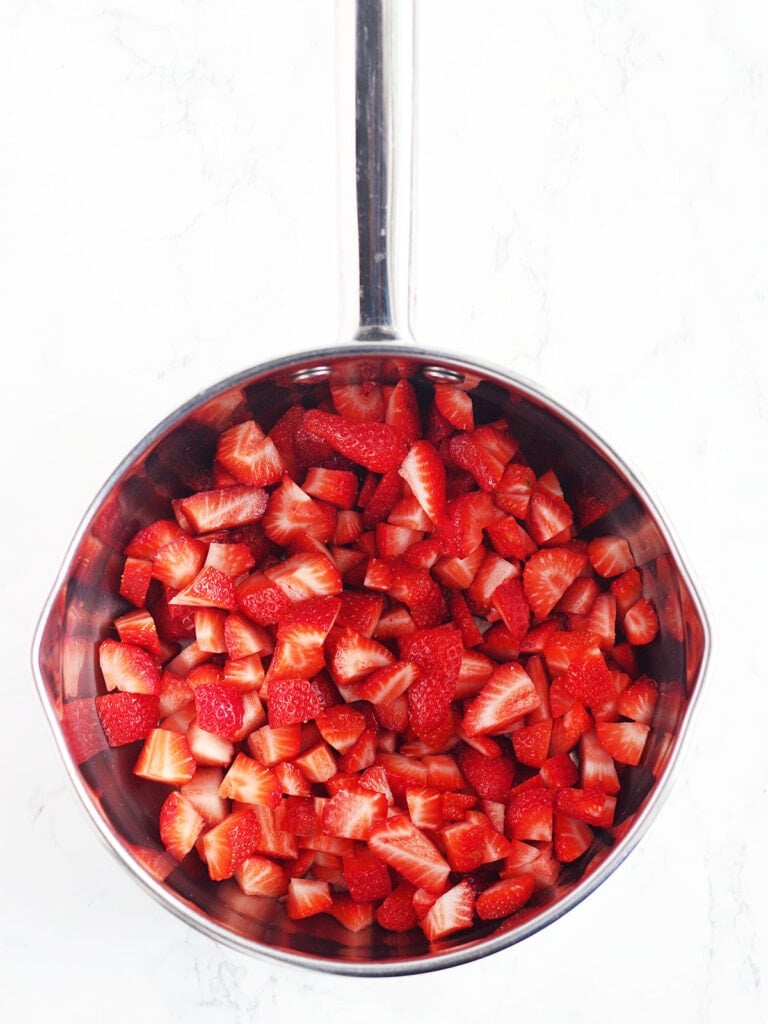
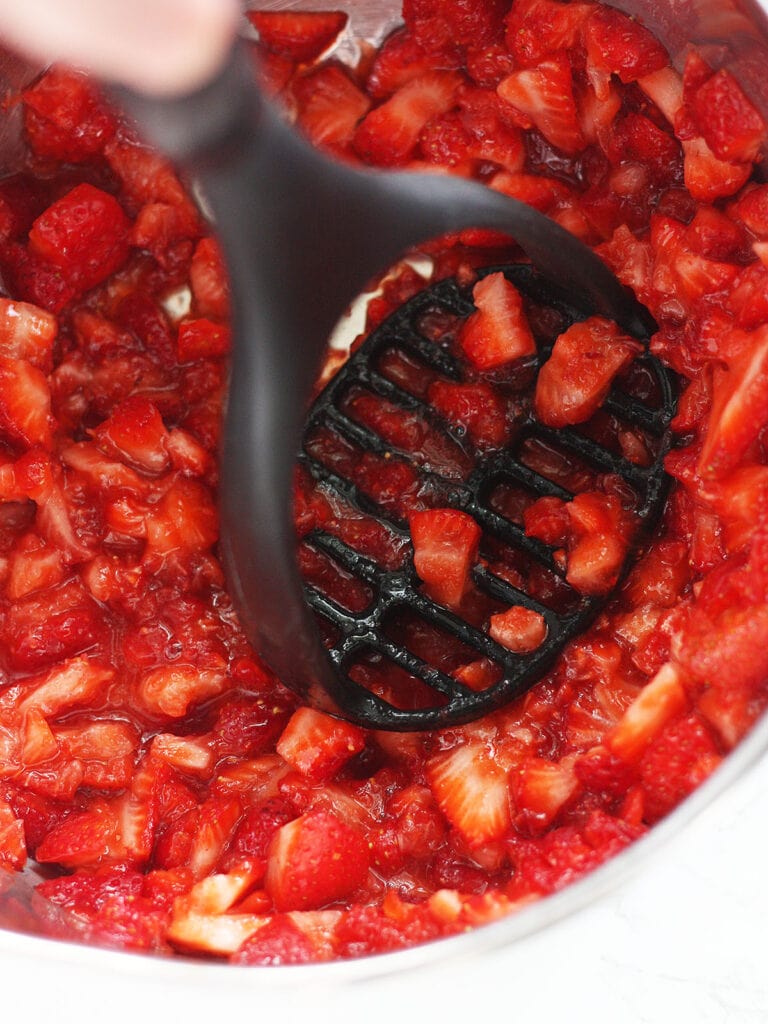
Bring the preserves to a boil
Stir in the bottled lemon juice. Gradually add the pectin and whisk until everything is combined.
Some recipes suggest adding a little butter to the preserves. As the preserves cook, it will create foam on the surface. This won’t hurt you and is completely edible. But it can make your jam look cloudy. The butter prevents the foam from forming by adding a little protein into the mix and breaking the surface tension. It will not affect the flavor of the jam.
Bring the preserves to a full rolling boil over high heat, stirring constantly so things don’t scorch the bottom of your pan. Full rolling boil means that the berries continue to boil even when you give it a stir. Once you have achieved a full rolling boil, add the sugar and stir to dissolve. Return the mixture to a boil and continue to boil for one minute, stirring constantly.
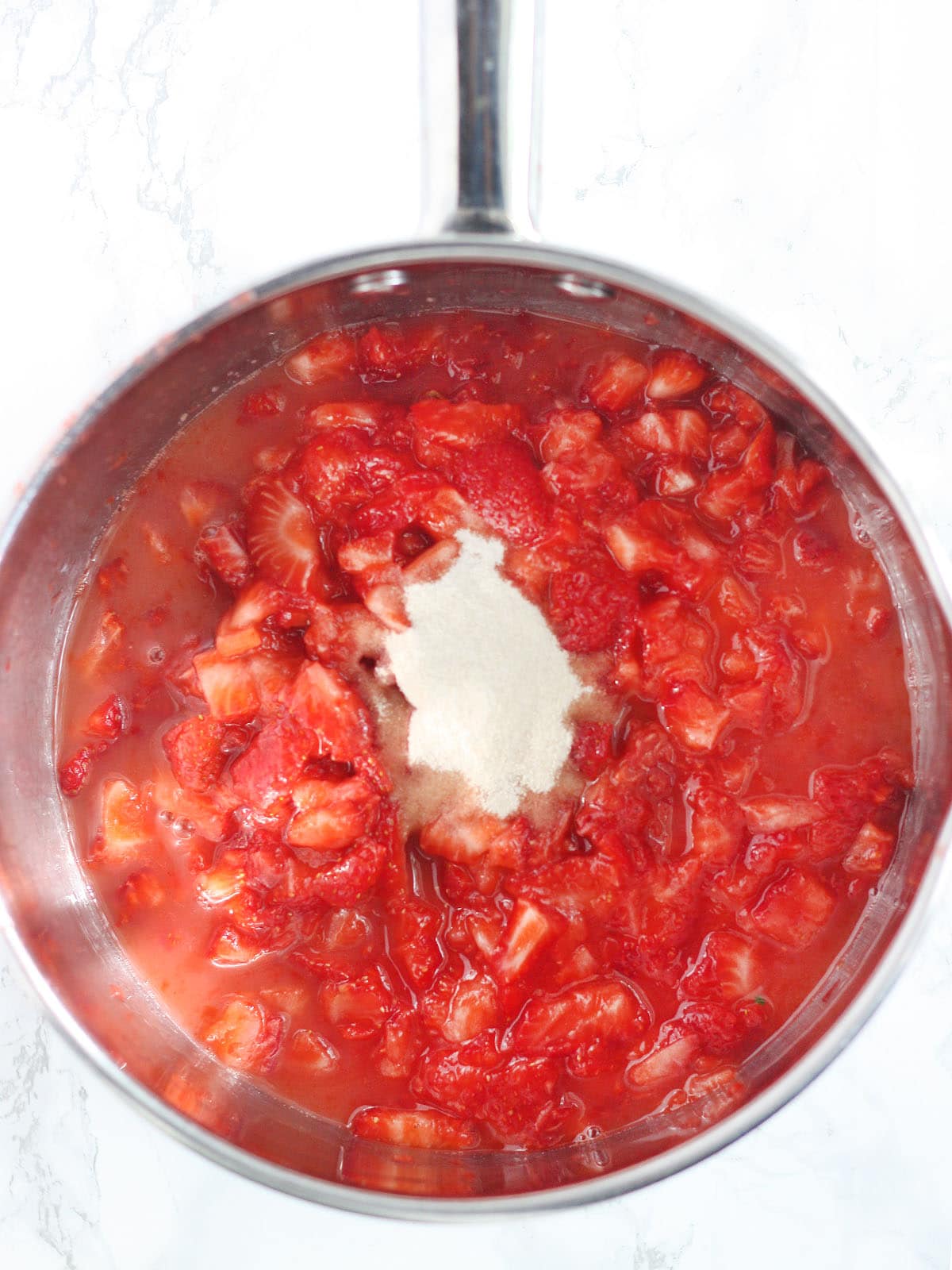
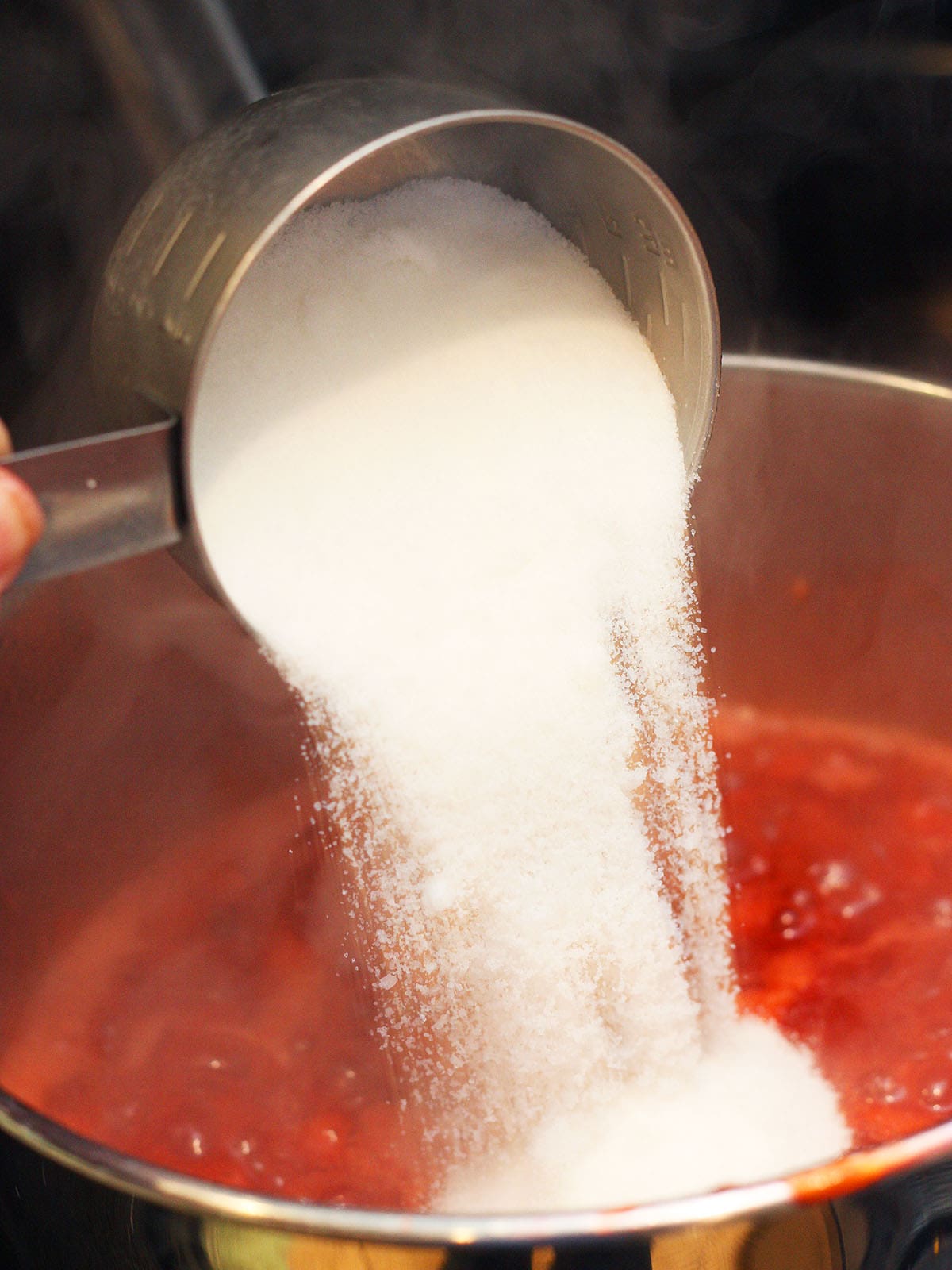

The spoon test
Remove pan from heat. Skim any foam off the top if necessary. The preserves will thicken significantly as it cools, but if you want to test it immediately, place a metal spoon in the freezer before you get started. Dribble a little of the hot preserves on the ice cold spoon. It should thicken up almost immediately, then you know if your preserves have reached the right consistency.
How to fix jam that didn’t set
It could take up to 48 hours for homemade preserves to completely gel. If you’ve been patient and waited that long and you’re still not satisfied with the consistency, don’t throw it away. It can still be salvaged.
Measure out the preserves, then pour it into a saucepan. If you have more than eight cups, you’ll need to work in batches. Bring the preserves to a boil, then for every four cups of preserves stir in 1/4 cup of white sugar and one tablespoon powdered pectin. Bring the preserves to a boil, then cook for 5-10 minutes, stirring constantly. Test for gelling using the frozen spoon method I describe above.
Storage and freezing instructions
Storage. Strawberry preserves that have not been canned or have been opened should be stored in and airtight container in the refrigerator and consumed within three months.
Freezing. Preserves can also be frozen up to 18 months. Be sure to leave 1/2-inch of clearance (headspace) between the preserves and the top of the container to allow for expansion as it freezes. Preserves that have been frozen should be thawed in the refrigerator. Once thawed, it may be a little more on the runny side than preserves that have not been frozen. I recommend freezing preserves in freezer-safe plastic containers rather than glass since glass is more susceptible to breaking when exposed to extreme temperatures.
Canning instructions
My preferred method of storage is canning. You do not need a pressure canner to can this easy strawberry jam recipe. The boiling water bath canning method is safe for foods with high acid, such as tomatoes, fruits, jams, jellies, pickles and other preserves. The only special equipment you will need is a large pot big enough to cover the tops of the jars with one inch of water. When filling clean glass jars for the canning process, leave a 1/4-inch headspace. Wipe the rim of each jar clean, then top with a lid and a ring. Process for 10 minutes.
Remove the canning pot from the heat and allow the canning jars to rest inside for five minutes. Then carefully remove them from the hot water and allow the hot jars to cool at room temperature. After 24 hours, remove the rings and test the lids for a seal. If the center of the lid does not flex, the jar is sealed. Any unsealed jars should be stored in the refrigerator. Canned jars should be stored in a dry, cool place out of direct sunlight. For best results, consume within 18 months.
Check out my tutorial on water bath canning to learn more.
Frequently asked questions
How can I reduce the amount of sugar?
If you are really trying to make a conscious effort to use less sugar in your homemade preserves, low or no-sugar-needed pectin is the way to go. These pectins bind with calcium instead of sugar to form the gel. I’ve been able to reduce the amount of sugar called for by half with the same results.. Ball and Sure-Jell both have low sugar pectin options. Use the same amount of pectin called for in the recipe and reduce the amount of sugar to 1 1/2 cups.
Can I use artificial sweetener instead of sugar?
Stevia, Spenda and saccharin products can all be used as a substitute for sugar as long as you are using low sugar pectin. Aspartame is not recommended for canning because the high heat will turn the product bitter. Follow the instructions listed above for low sugar preserves. Since artificial sweeteners are sweeter than regular sugar, substitute two tablespoons of sweetener for every one cup of sugar. For example, when using low sugar pectin this recipe calls for 1 3/4 cups of sugar. You would want to use 3 tablespoons plus 1 1/2 teaspoons of artificial sweetener. Please keep in mind that the jam may have a slightly different texture.
Can I use honey instead of sugar?
For jams that use low sugar pectin, you can replace the sugar with honey. Since honey is sweeter, I recommend using half the amount of sugar the recipe calls for. For example, when using low sugar pectin this recipe calls for 1 3/4 cups of sugar. You would want to use 3/4 cup plus two tablespoons of honey. You will need to cook the jam down a bit longer for it to gel. Even so, it may still be softer than if you had used sugar.
Can I use brown sugar instead of white sugar?
Brown sugar can be used to replace white sugar in this recipe. However, it may result in a slightly different taste and texture.
Can I use fresh lemon juice in stead of bottled?
No. In just about all of my recipes, I recommend using fresh lemon juice instead of bottled. Homemade jam is the exception. Achieving the right amount of acidity in preserves is crucial. It works with the pectin to increase its ability to gel. It also prohibits the formation of bacteria, which means your preserves will last longer. Unfortunately, no two fresh lemons have the same amount of acidity. It varies from fruit to fruit. Bottled lemon juice has a consistent acidity level and is recommended over fresh for making homemade preserves.
Can this recipe be doubled?
Yes. This is considered a small batch recipe, which means it only produces a few jars. One recipe will typically yield two pint jars, four (8-ounce) jelly jars, or eight half-pint jars. This recipe can be doubled. However, I would not recommend trying to triple or quadruple the recipe. It can affect your cooking time and prevent the preserves from setting properly.
My jars didn’t seal after I canned them? Can I recan them?
If after 24 hours your lids have not formed a seal, you can recan them. Remove the lids from the unsealed jars and discard them. Wipe the rims of the jars clean and top them with new lids and a ring. Follow the canning instructions listed above.
Can I use liquid pectin instead of powdered?
Yes, but the cooking method will differ. Powdered pectin needs to be added before cooking. Liquid pectin is added after. The measurements will also differ: 1 tablespoon of liquid pectin = 2 teaspoons of powdered pectin. So for this recipe, use 4 1/2 tablespoons of liquid pectin to replace the three tablespoons of powdered.
Can I replace the strawberries with another type of berry?
Any low pectin berry, such as raspberry, blackberry, or blueberry will work for this recipe.
All my fruit rose to the top during canning. What do I do?
First, you didn’t do anything wrong. Sometimes this can happen and it’s not a big deal. When you open the jar of preserves, simply give it a stir to mix the fruit back in.
Can I use a pressure canner instead of a water bath canner?
You can use a pressure canner for water bath canning, but you should not pressure can these preserves. Confused? Let me unpack. My pressure canner is the largest pot I own. If I have a lot of jam to can, I will use it as a water bath canner. Simply cover the jars with enough water to cover them by one inch. Place the lid over the top, but don’t seal it. You don’t want to build pressure within the canner.
Foods like jams, jellies or preserves should not be pressure canned. Pressure canning heats food to a much higher temperature than water bath canning. This can break the gel and cause your preserves to be runny.
Can I use frozen strawberries?
Yes. Frozen strawberries can be used in place of fresh when making strawberry preserves. Allow the berries to thaw beforehand. Add in any juice that has accumulated during the thawing process.
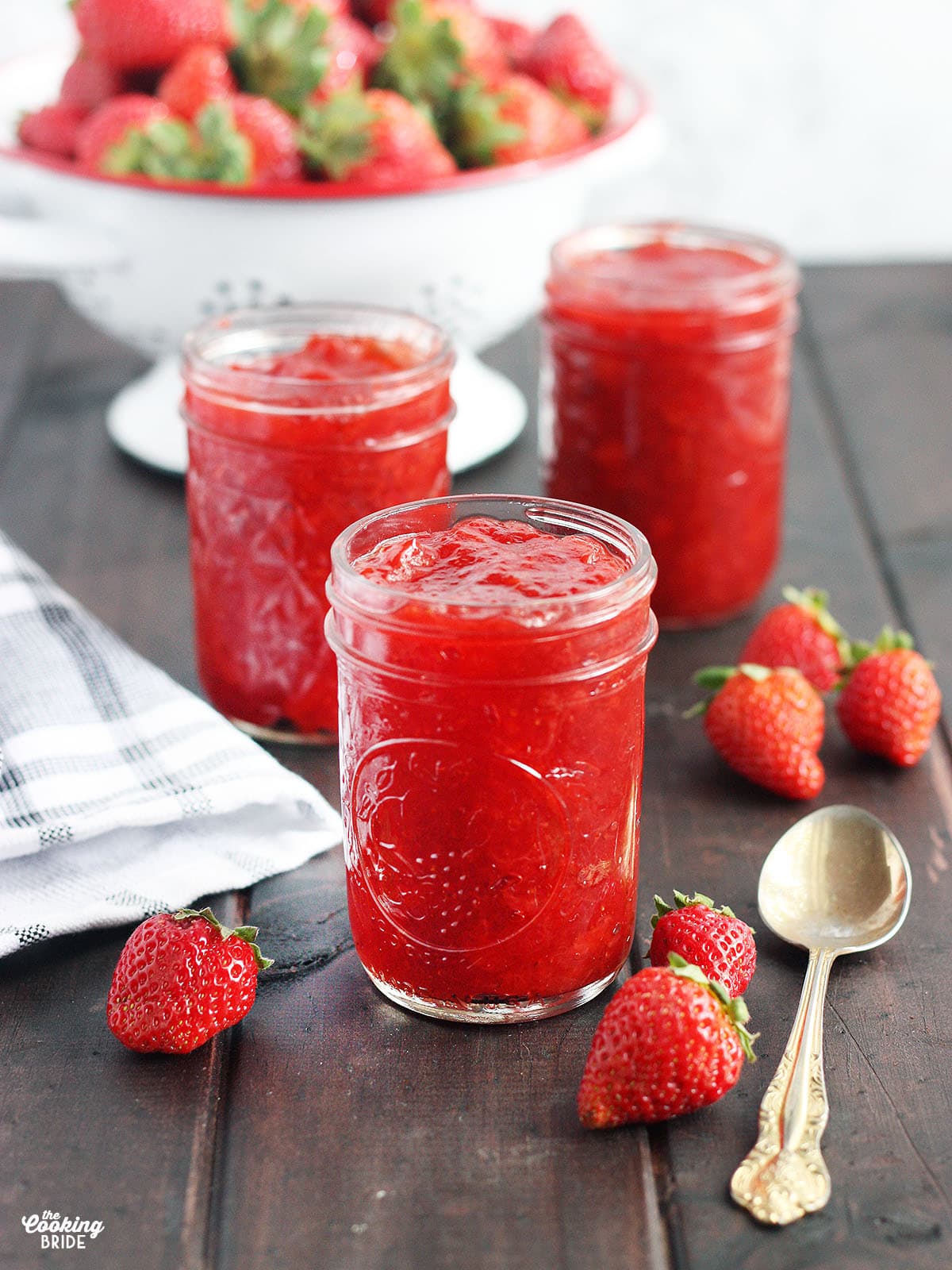
Basic Homemade Strawberry Preserves
Ingredients
- 3 pints whole strawberries (about six cups sliced)
- 1/4 cup BOTTLED lemon juice
- 3 tablespoons pectin
- 1 teaspoon butter
- 3-1/2 cups granulated sugar*
- Glass Mason jars with lids and bands
Instructions
- Place sliced strawberries in a 6 or 8-quart saucepan. Crush the strawberries using a potato masher.
- Stir in lemon juice, then gradually add pectin.
- Add the butter to the top of the preserves.
- Bring the mixture to a full rolling boil over high heat, stirring constantly.
- Add the sugar and stir to dissolve. Return the mixture to a boil. Continue to boil for one minute, stirring constantly.
- Remove the pan from heat. Skim foam if any has accumulated.
Water bath canning:
- Fill clean glass jars, leaving 1/4-inch of headspace.
- Process jars for 10 minutes.

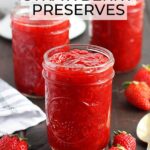
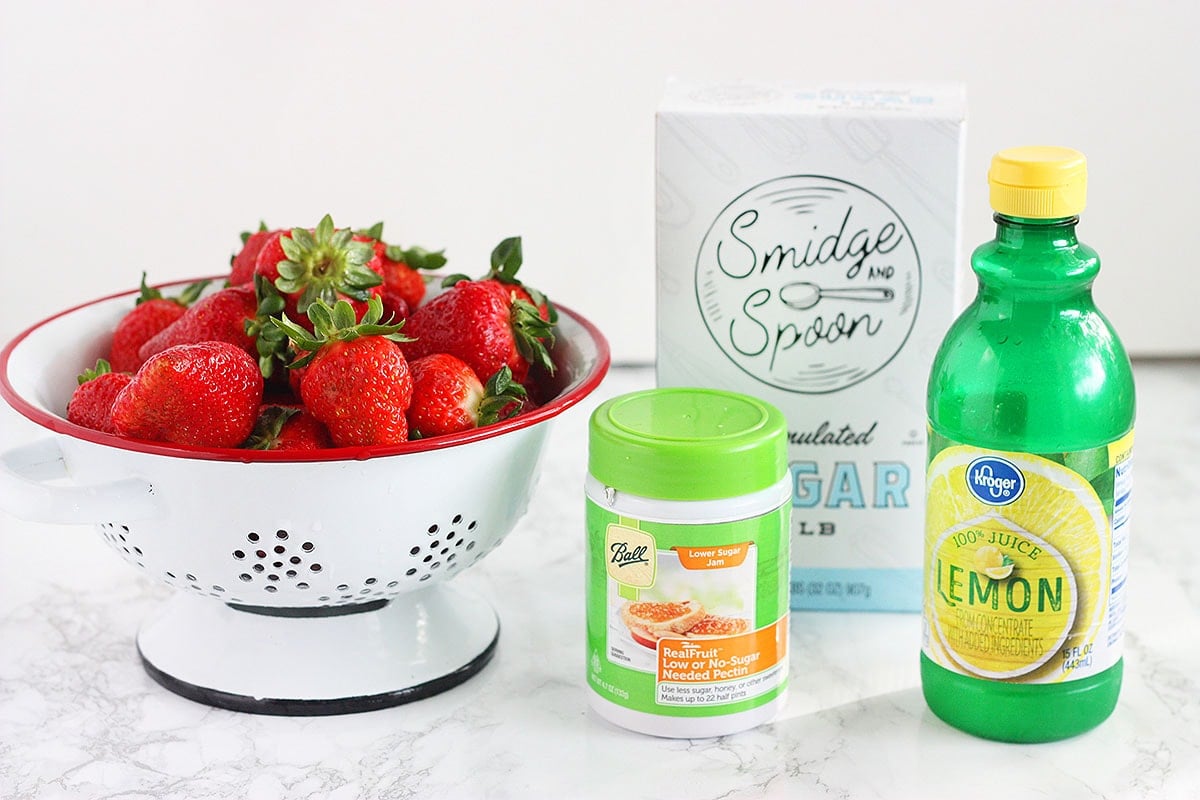
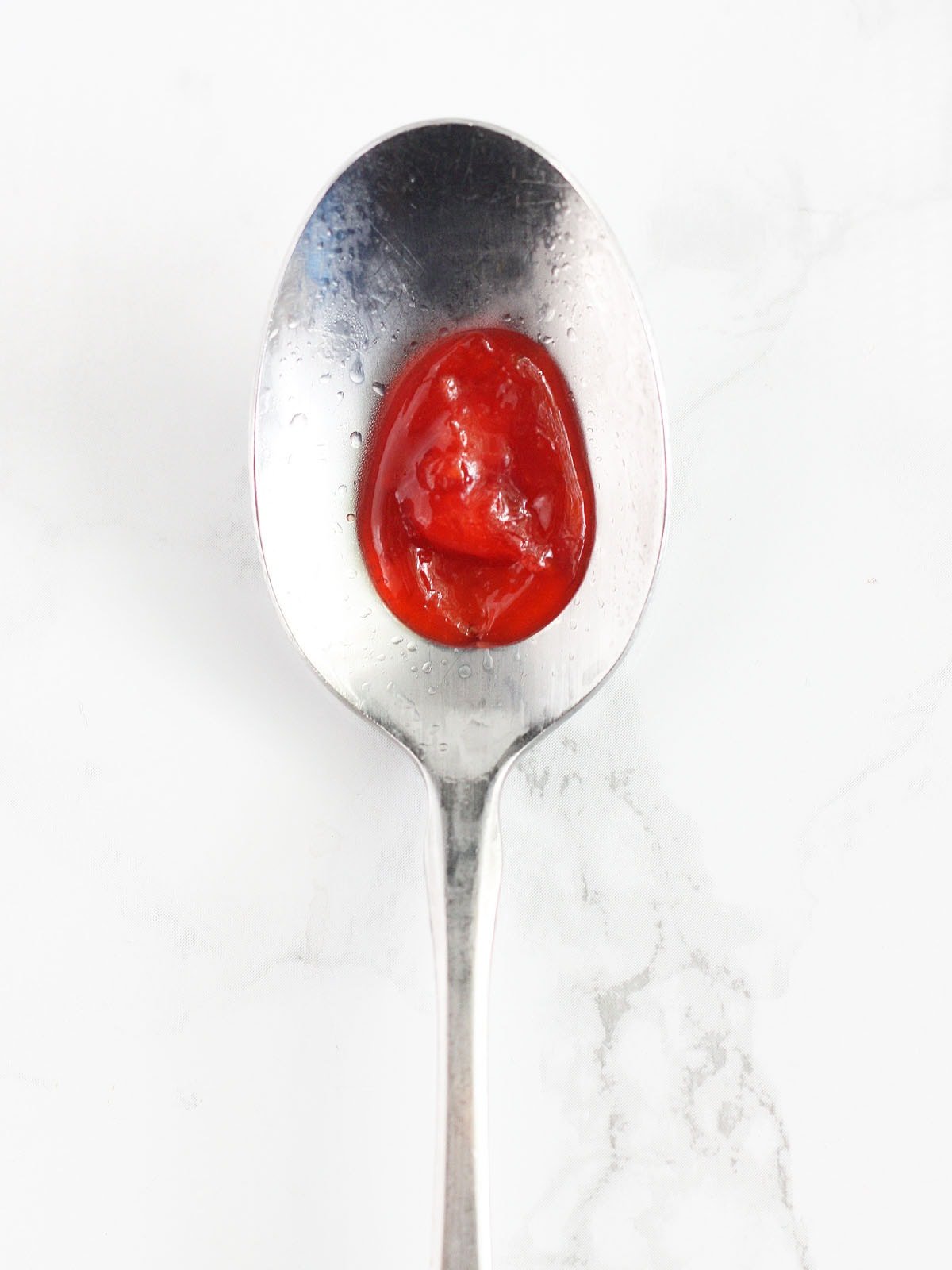
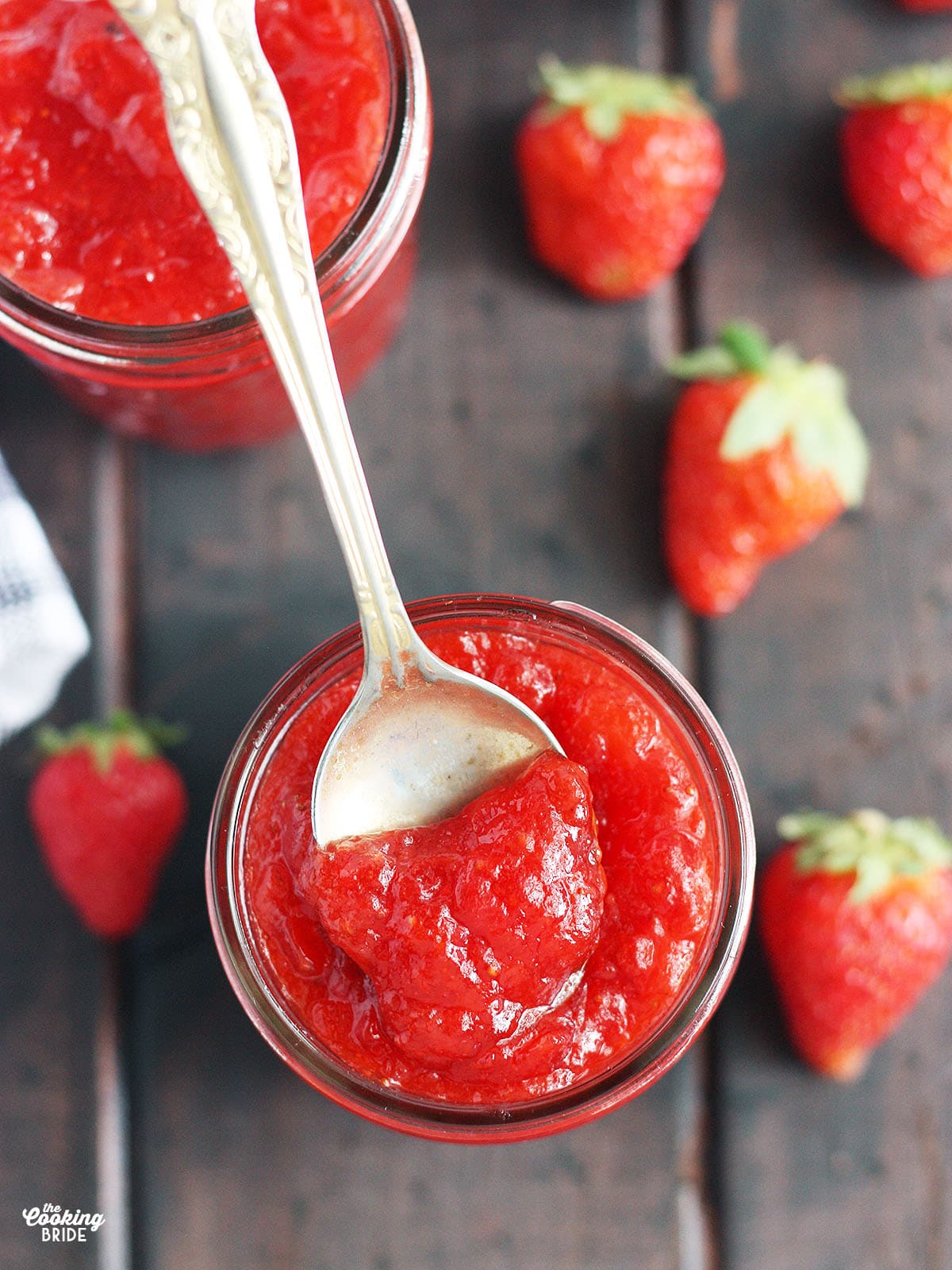
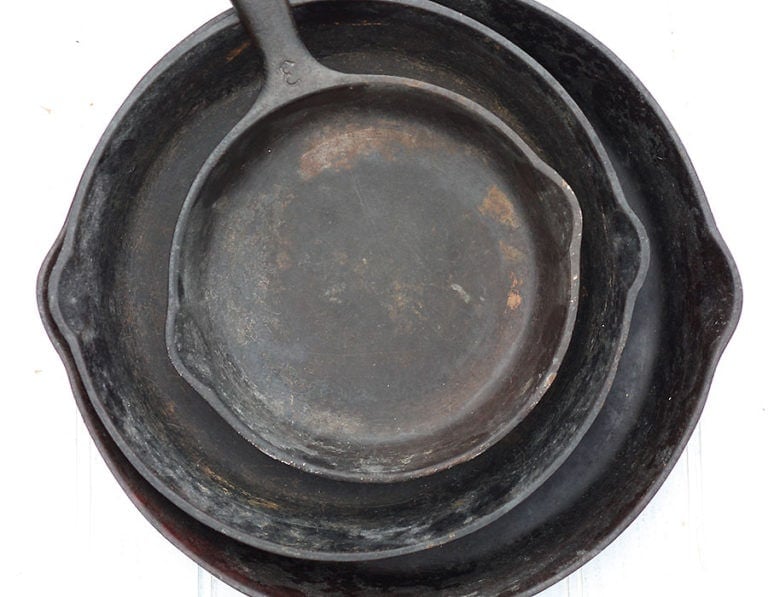
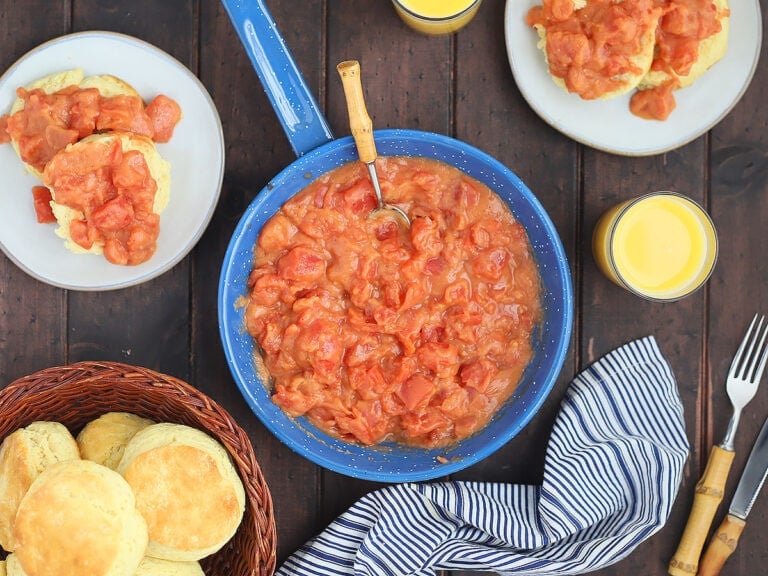
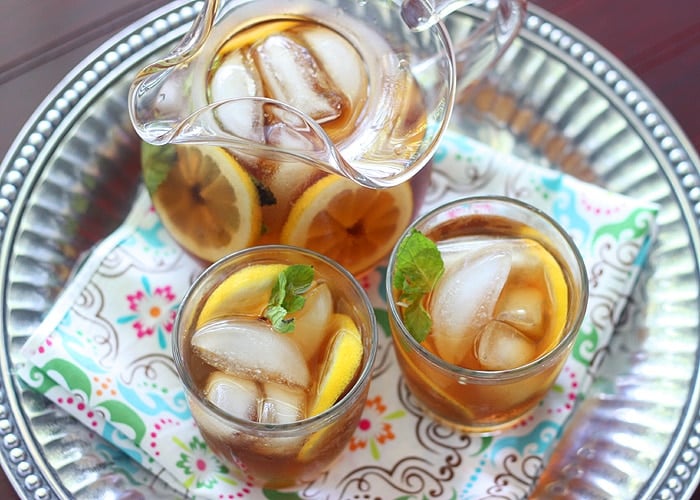

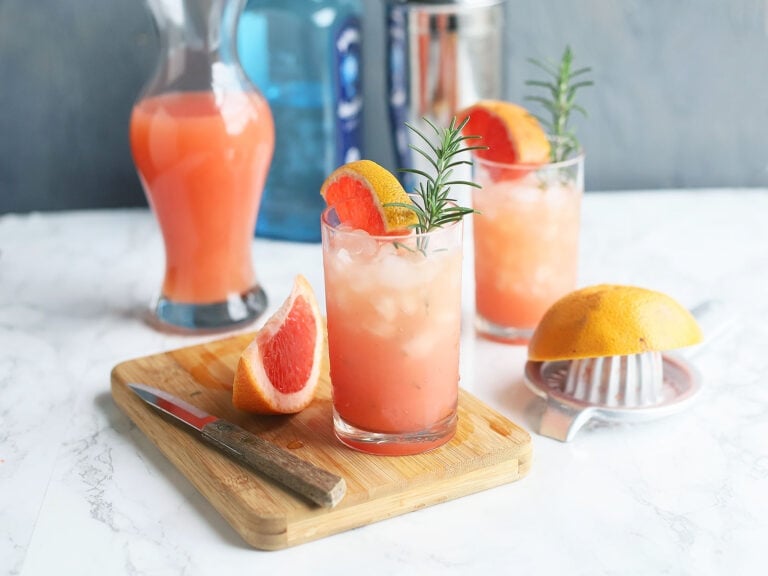

My jam thickened up some. Still a bit runny. Will it continue to thicken as it sits on shelf? My apple butter did.
Moe, I am so glad to hear this! Thank you for coming back and leaving a comment.
I’ve made strawberry jam for four years now using the same recipe with varied results. Last years batch was a disaster so I decided to try your recipe instead this year. I’m so glad I did. It was so simple compared to the previous recipe I had and I made separate two batches that were perfectly set. Thank you for posting this! You are bookmarked for next year!
Hanna, thank you so much! You’ve made my day.
I think you could swap the berries for blueberries or raspberries. They are all low pectin fruit, so the ratios should stay the same. If you decide to give it a try, let me know how it turns out!
I was just curious if you could replace the strawberries for raspberries or blueberries, etc? Without having to change the whole recipe? If not, do you have any recipes for raspberry or blueberry jam?
Love your recipes btw! It’s such a cute and extremely helpful website. I especially like your tips, tricks and notes that you throw in, it makes things easier to understand and steps easier to follow when I know what to look out for, how to know when I am doing something right, if the recipe is really what I am looking for and what not to do, etc! You’re doing an amazing job! 🙂
Hi Melissa, if you are planning to can the jam it is recommended that you use bottled. It has a consistent acid level you need to keep the jam from spoiling.
can you use real lemon juice instead of bottled
You didn’t do anything wrong. Sometimes this can happen with jam. There is air still trapped in your strawberries which caused them to rise to the top. When you get ready to use a jar, just give it a good stir. It should redistribute the fruit.
I made this jam and doubled the recipe – I even added an extra cup of berry since there was a little left. All the fruit is to the top and the bottom all jell – I did cut up and crush the fruit. There is litterally no fruit in bottom half… I am disappointed to say the least. What went wrong?
I made my second batch of strawberry jam using this recipe. Very easy, straight -forward and delicious recipe.